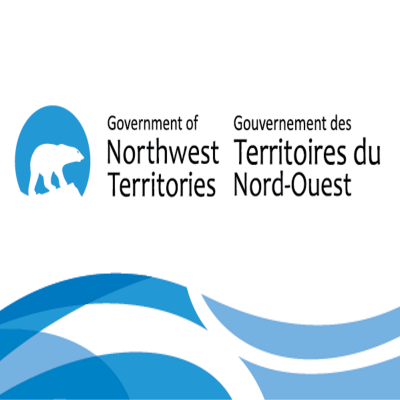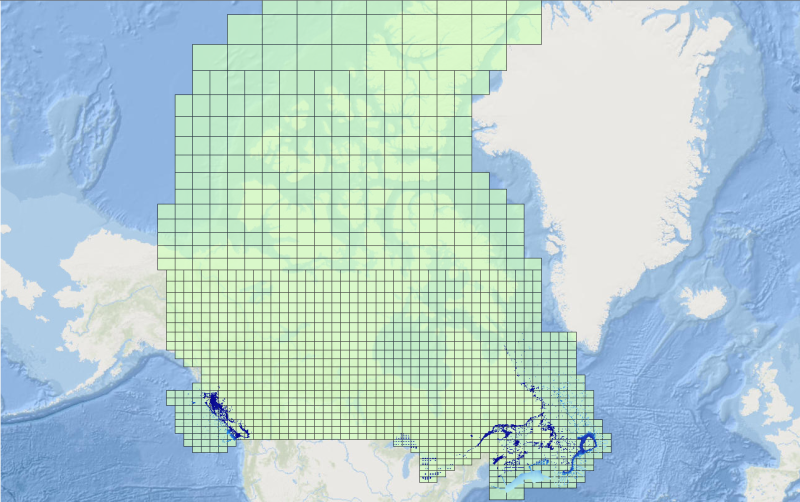Imagery base maps earth cover
Type of resources
Available actions
Topics
Keywords
Contact for the resource
Provided by
Years
Formats
Representation types
Update frequencies
status
Service types
Scale
Resolution
-

This is a Mosaic of Canada which is made from 121 images captured by Canadian satellite RADARSAT-2. These images were acquired from May 1, 2013 to June 1, 2013. The color variation represents the changes in soil texture, roughness and the level of soil moisture. (Credit: RADARSAT-2 Data and Products © MacDonald, Dettwiler and Associates Ltd. (2013) - All Rights Reserved. RADARSAT is an official mark of the Canadian Space Agency.)
-

The “Soils of Canada, Derived” national scale thematic datasets display the distribution and areal extent of soil attributes such as drainage, texture of parent material, kind of material, and classification of soils in terms of provincial Detailed Soil Surveys (DDS) polygons, Soil Landscape Polygons (SLCs), Soil Order and Great Group. The relief and associated slopes of the Canadian landscape are depicted on the local surface form thematic dataset. The purpose of the “Soils of Canada, Derived” series is to facilitate the cartographic display and basic queries of the Soil Landscapes of Canada at a national scale. For more detailed or sophisticated analysis, users should investigate the full “Soil Landscapes of Canada” product.
-

McElhanney Consulting Services Ltd (MCSL) has performed a LiDAR and Imagery survey in southern Saskatchewan. The acquisition was completed between the 16th and 25th of October, 2009. The survey consisted of approximately 790 square kilometers of coverage. While collecting the LiDAR data, we also acquired aerial photo in RGB and NIR modes consisting of 1649 frames each.
-

The “Land Cover for Agricultural Regions of Canada, circa 2000” is a thematic land cover classification representative of Circa 2000 conditions for agricultural regions of Canada. Land cover is derived from Landsat5-TM and/or 7-ETM+ multi-spectral imagery by inputting imagery and ground reference training data into a Decision-Tree or Supervised image classification process. Object segmentation, pixel filtering, and/or post editing is applied as part of the image classification. Mapping is corrected to the GeoBase Data Alignment Layer. National Road Network (1:50,000) features and other select existing land cover products are integrated into the product. UTM Zone mosaics are generated from individual 30 meter resolution classified scenes. A spatial index is available indicating the Landsat imagery scenes and dates input in the classification. This product is published and compiled by Agriculture and Agri-Food Canada (AAFC), but also integrates products mapped by other provincial and federal agencies; with appropriate legend adaptations. This release includes UTM Zones 9, 10, 11, 12, 13, 14, 15, 16, 17, 18, 19, 20, 21, and 22 for corresponding agricultural regions in Newfoundland, Prince Edward Island, Nova Scotia, New Brunswick, Québec, Ontario, Manitoba, Saskatchewan, Alberta and British Columbia covering approximately 370,000,000 hectares of mapped area. Mapped classes include: Water, Exposed, Built-up, Shrubland, Wetland, Grassland, Annual Crops, Perennial Crops and Pasture, Coniferous, Deciduous and Mixed forests. However, emphasis is placed on accurately delineating agricultural classes, including: annual crops (cropland and specialty crops like vineyards and orchards), perennial crops (including pastures and forages), and grasslands.
-

Our Imagery Base Maps and Mosaics of a number of Raster Datasets. This includes the ASTER DEM, CDED and Shaded Relief Datasets. As well as a number of mosaics, including SPOT, RapidEye, Landsat, and MVI Landcover data.
-

The MODIS Surface Albedo and Surface Reflectance Dataset (or simply Albedo) includes times series of 10-day composite products derived at 250-m spatial resolution over Canadian territory and neighboring areas produced at the Canada Centre for Remote Sensing (CCRS) since February 2000.The datasets contain spectral and broadband reflectance’s and albedo for MODIS bands B1-B7 designed primarily for land applications. The imagery for all spectral bands was downscaled and re-projected into the Lambert Conformal Conic (LCC) projection at 250-m spatial resolution. The area size is 5,700 km × 4,800 km. The specialized MODIS processing system was developed at CCRS to fully utilize the high quality of MODIS L2 swath imagery over the northern latitudes. As such, the CCRS Albedo product is different from the standard NASA product. The differences are related to temporal and spatial scaling, shape of kernel functions employed to fit data, as well as details of scene identification, atmospheric correction, and data fitting methodology.
-

CHS offers 500-metre bathymetric gridded data for users interested in the topography of the seafloor. This data provides seafloor depth in metres and is accessible for download as predefined areas.
-

Mackenzie Valley Air Photo Digital Orthotiles
-

McElhanney Consulting Services Ltd (MCSL) has performed a LiDAR and Imagery survey in southern Saskatchewan. The purpose was to generate DEMs for hydraulic modeling of floodplain, digital terrain maps, and other products for portions of the Swift Current Creek valley and other miscellaneous tributaries and related water course valleys in and around the City of Swift Current. The acquisition was completed between the 16th and 25th of October, 2009. The survey consisted of approximately 790 square kilometers of coverage. While collecting the LiDAR data, we also acquired aerial photo in RGB and NIR modes consisting of 1649 frames each. In addition to the main area of interest, McElhanney has acquired some LiDAR and photo of low lying areas adjacent to the project area. This additional area was acquired on speculation that the data may be required in the future. The 3Dimensional laser returns (point cloud) were classified using Microstation (v8), Terrascan and TerraModeler. A series of algorithms based on topography were created to separate laser returns that hit the ground from the ones that hit objects above the ground. Steps taken are: Classified LiDAR surface as Bare earth, Classified other features as non-bare earth or default, Formatted to ASPRS .LAS V1.1 (Class 1 - Default (non-bare earth), Class 2 – Ground points (bare earth)), 239 tiles each 2km x2km generated for LiDAR data, File prefix FF – Classified (Non-Bare Earth and Bare Earth), File Prefix BE – Bare Earth only, Bare Earth Model Key Point (MKPts) surface files are thinned Bare earth LiDAR points. MKPts files generate a virtually identical surface without the large file size, MKPts file format is ASCII (Easting Northing Z-elevation) xyz and LAS format.
-

This layer represents Land use polygons as determined by a combination of analytic techniques, mostly using Landsat 5 image mosaics . BTM 1 was done on a federal satellite image base that was only accurate to about 250m. The images were geo-corrected, not ortho-corrected, so there is distortion in areas of high relief. This is not a multipart feature
 Arctic SDI catalogue
Arctic SDI catalogue